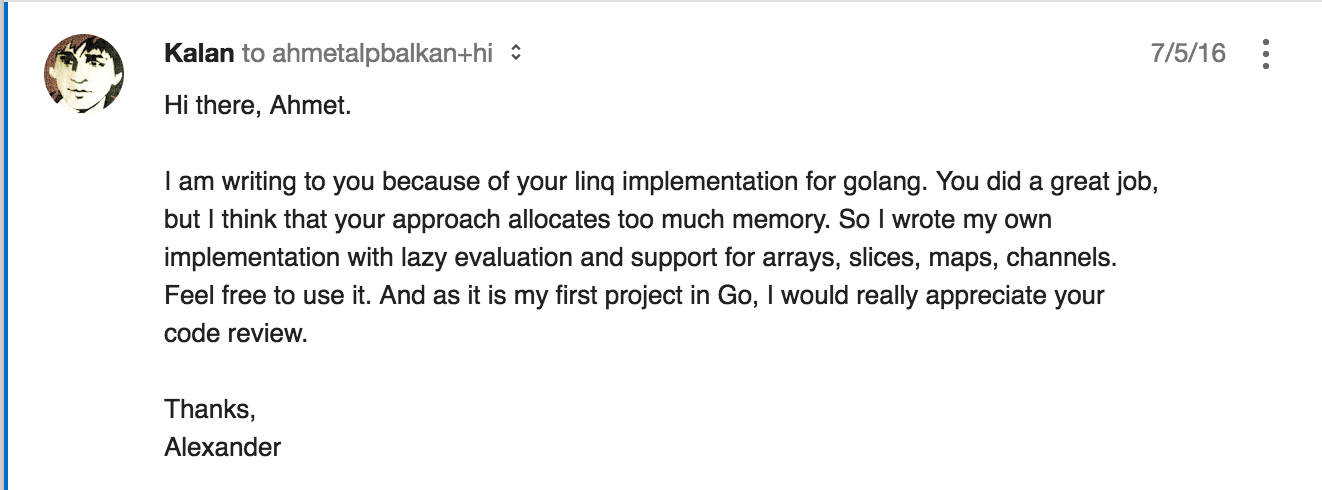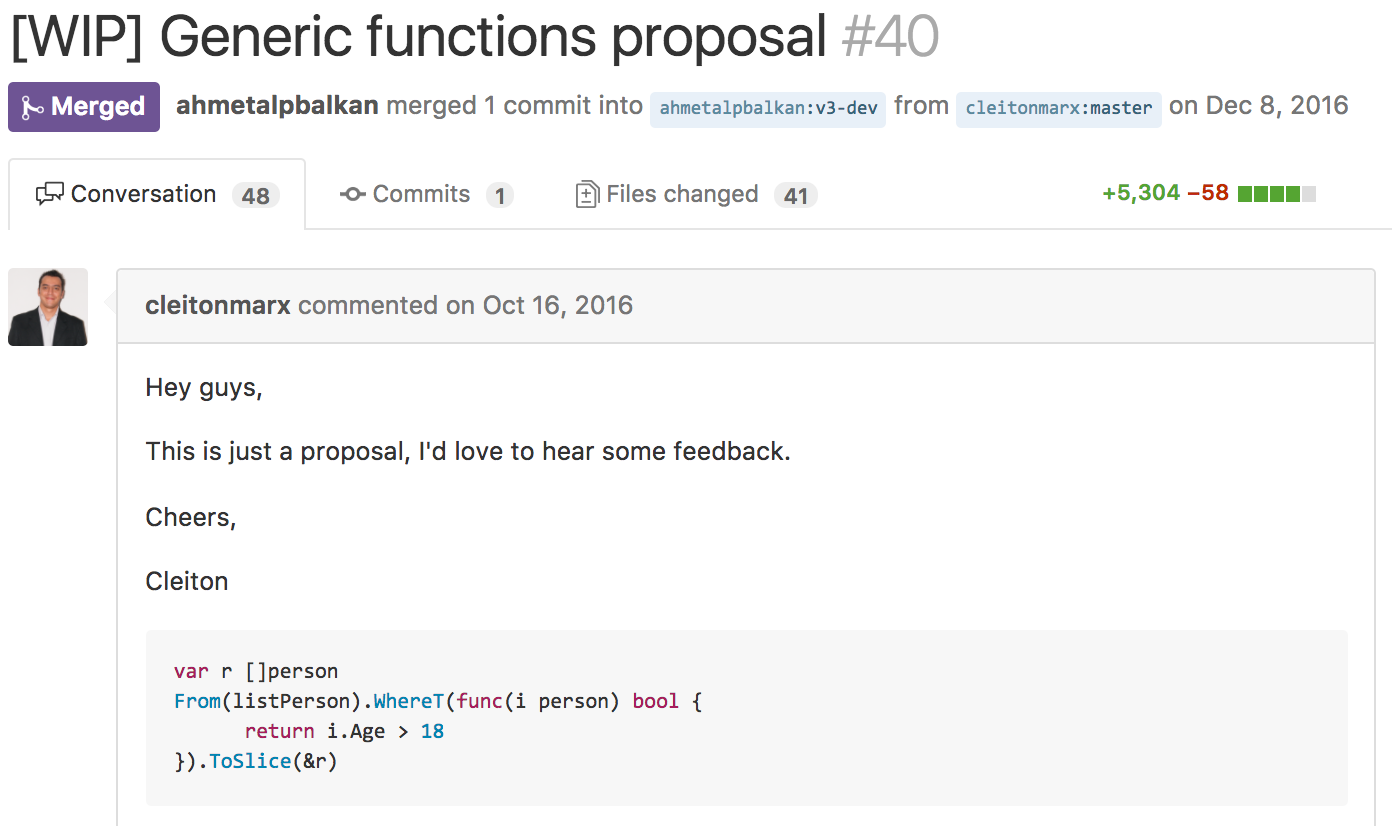I have some exciting news about go-linq, my first Go project ever: We have two new and excited maintainers.
They added a number of really cool features to the project over the past few months and we finally have some stable releases. I can’t wait more to talk about all these
#
What is go-linq ?
go-linq is an anti-pattern library to address a lack of language-integrated collection querying and comprehension functionality in Go. I initially wrote it to see if it would be actually nice to have.
It roughly works by giving it an input slice/map/chan or another source, and chaining a bunch of methods after it.
+----------+
| |
+------v-------+ |
+---------------+ | .Where(...) | | +--------------------+
| slice | | +--+ |.ToSlice(&v) |
| | | .Select(...) | | |
| map | | +----->.ToMap(&v) |
From(| |)+----> .OrderBy(...)| | |
| chan NEW!| | | |.ToChannel(c) NEW!|
| | | .GroupBy(...)| +--------------------+
| custom NEW!| | |
+---------------+ | .Join(...) |
| |
| ... |
+--------------+
Basically, if you are tired of writing a for-loop in every project to test
whether a slice contains a particular value you can simply type:
From(slice).Contains(v)
Here is a more complicated example:
func ownersOfNewCars(cars []Car) []string {
var owners []string
From(cars).Where(func(c interface{}) bool {
return c.(Car).year >= 2015
}).Select(func(c interface{}) interface{} {
return c.(Car).owner
}).ToSlice(&owners)
return owners
}
Looks a bit ugly, as I said, almost an anti-pattern, but we will make it prettier in a minute.
# What was wrong with go-linq?
go-linq did what was written on the box, but with certain gotchas:
- no lazy evaluation with iterator pattern like in .NET’s LINQ. The initial version evaluated all the data from beginning to the end at each step of the LINQ functions chain.
- poor memory management/performance because I was allocating brand new slices in each step of the chain, the code kept creating of the input slice many times for no reason. This resulted in pretty poor memory management and performance.
# Improvements
# 1. Memory & Performance
In one of those warm Seattle mornings, I got this email:

Somebody who I never talked to before told me that he rewrote
Turns out by implementing the iterator pattern from the .NET’s LINQ, we are now passing the data down as it is computed, therefore only a certain amount is stored in the memory at any time while the computation pipeline is executed. This dramatically improved the performance and changed the project architecture, which eventually enabled other features (more about this in a minute).
We worked together on his huge pull request that made go-linq v2.0
happen! So, I am happy to welcome Alexander Kalankhodzhaev (@kalaninja)
as a new maintainer to
# 2. Parametric Functions Support
If you look at the example above, you will see bunch of empty interface{}s,
type assertions (c.(Car).year). Apparently we could do better than that.
A while ago, somebody suggested implementing support for parametric functions. I couldn’t really understand how they would even work and we closed the proposal since implementing them requires reflection and therefore the resulting code would be slow.
Few months later, another fellow programmer showed up with yet another huge pull request. He had the same proposal, but he showed up with the code (lots of it, took us 2 months to discuss the design and review):

With some reflection tricks, interface{} and type assertions. We accept can predicate
functions that contain your own types directly:

This is extremely cool; however, it does not come for free: If you use parametric
functions, your code runs 5-10x slower. We think that this is useful
for many scenarios that do not have huge datasets or performance concerns, such as
not using
Eventually, we landed this change in go-linq v3.0 and I am glad to announce that
Cleiton Marques (@cleitonmarx) is a new maintainer on
# 3. Channels Support
Prior to
Similarly, you had no option to take data out of your
Applying the iterator pattern and lazy evaluation enabled us to add methods such
as FromChannel(ch) (From(ch) also works) and ToChannel(ch) to consume and
produce data as they become available. You can now process data coming from a
stream using
# 4. Custom Collections/Types Support
Prior to Iterable interface can be passed to From(...) function.
Similarly, prior to OrderBy). With
v2.0, any type that implements the Comparable interface can be
sorted.
# 5. Better Documentation
It is now much easier to learn
Comments